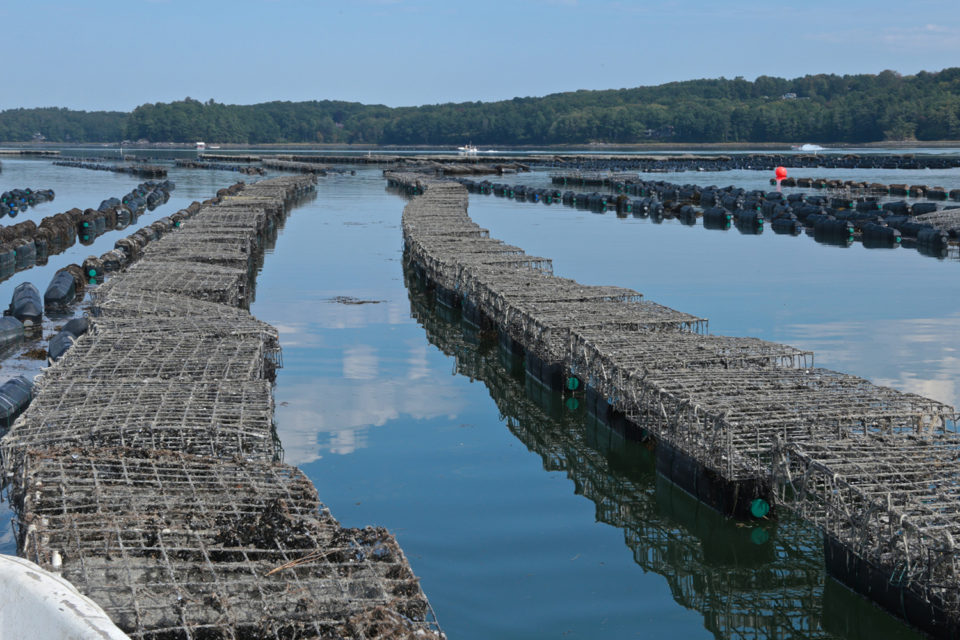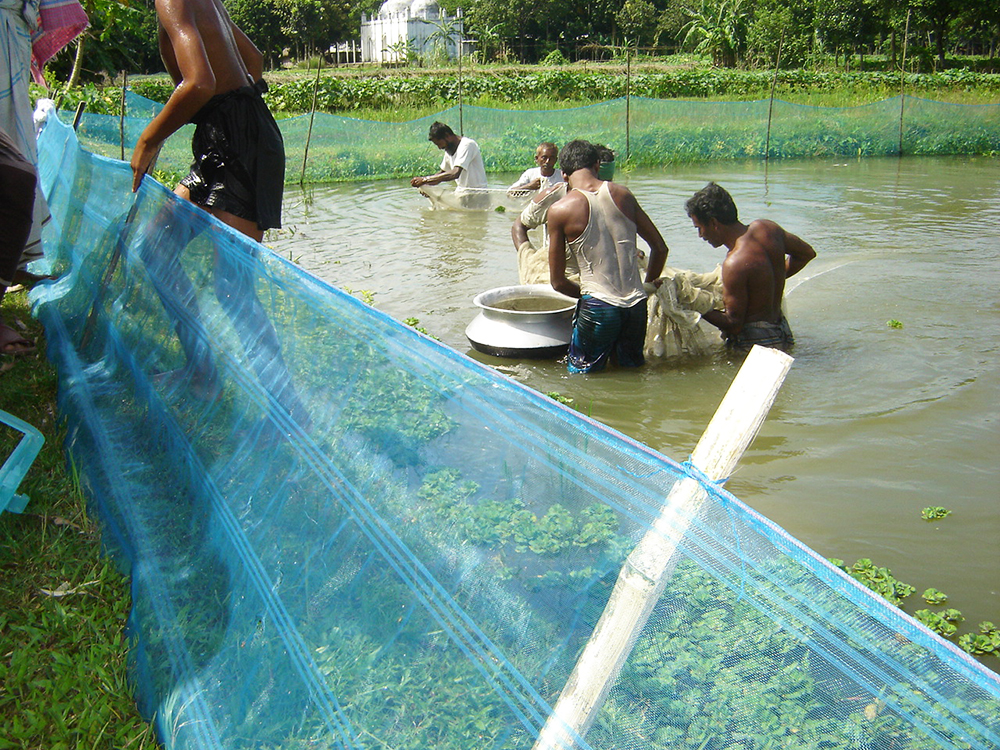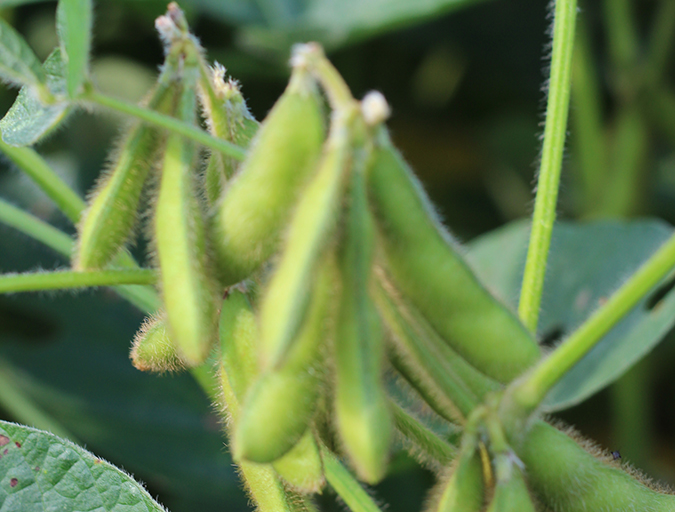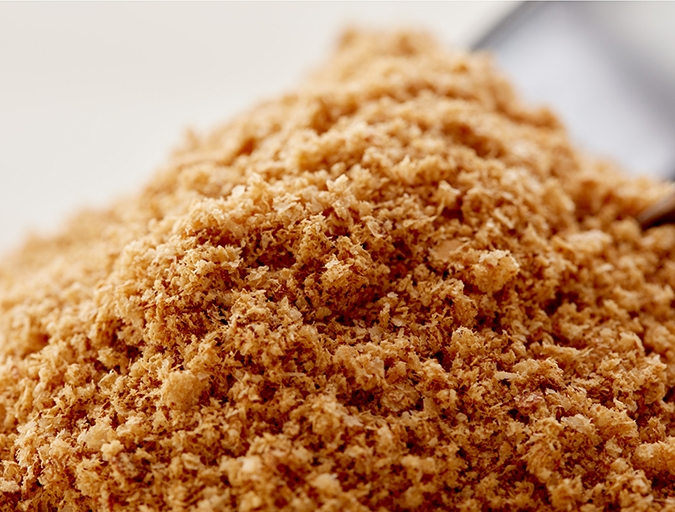Mook Sea Farm prepares for ocean acidification, shellfish farming’s existential challenge

Bill Mook is juggling a lot these days. He’s running Mook Sea Farm, a thriving business based on the Damariscotta River in mid-coast Maine. He’s also overseeing a project to expand and adapt his oyster farm and hatchery to a new environmental reality: It will be built to address the risks associated with climate change. He’s already seeing more frequent and intense rain storms and more acidic and warming seawater, none of which are good for growing shellfish.
As he works to raise public awareness about climate change – handling a steady stream of press, political, policy and public events – he watches for further changes in the environmental conditions affecting his farm.
Mook Sea Farm sells seed oysters to 100 growers, from North Carolina to Maine, and markets its own product under the Wiley Point and Pemaquid Point brands.
I’m pretty focused on not having all the work I’ve done for my whole career disappear because we can’t be fast on our feet.
His investments in adapting to the effects of climate change may pay off in some new opportunities to help the business thrive.
“I’m pretty focused on not having all the work I’ve done for my whole career disappear because we can’t be fast on our feet,” said Mook, who as a kid in Cooperstown, N.Y., developed a love for the marine environment while spending summers at his grandmother’s house in Rhode Island.
Mook was a graduate student in oceanography in the late 1970s before realizing he didn’t really want to be a research scientist. He got a job in a shellfish hatchery and when it folded, he was compensated with equipment that he leveraged into a new business.
In 1985, he secured leases on the Damariscotta River and founded Mook Sea Farm.
“Every problem has opportunity and that’s what it takes to be an entrepreneur – to see what those opportunities are.”
Whopping storms
On the first day of November, generators powered both Mook’s home and business during a power outage lasting several days following two severe rain storms within a week. That day, the farm could return to harvesting and shipping oysters following a five-day state closure of shellfish harvesting due to the heavy rains.
Maine automatically closes areas of its coastline to shellfish harvesting when two or more inches of rain fall in a 24-hour period to protect public health from the pollution draining watersheds into the rivers, then the Gulf of Maine. The closures typically last for three to four days.
“All the [climate change] models correctly predicted that the Northeast of the [United States] would get an increase in the very, very heavy precipitation events,” said Mook. A one-week halt to harvesting and shipping product equates to a revenue loss of about $35,000 to $50,000, he estimated.
There are more heavy rainfall events across the United States and that’s expected to continue, according to the U.S. Global Change Research Program’s Climate Science Special Report, representing the work of scientists at 13 U.S. agencies and the state of the science of climate change, with a focus on the United States.
“The largest observed changes in the United States have occurred in the Northeast,” said the report.
Heavy rainfalls and nutrient overload exacerbate the problem of ocean acidification (OA) in the Gulf of Maine, where coastal waters are more susceptible to drops in pH compared to global ocean averages. A heavy rainfall increases volume of freshwater in Maine’s rivers as they meet the coast, including in the salty Damariscotta River where Mook Sea Farm operates, which lowers the salinity and increases the acidity of coastal waters, making the water more corrosive to oysters forming shells.
In 2009, Mook first learned the effects of climate change were impacting his business, and leading to larvae losses. He met shellfish growers from Whiskey Creek in the Pacific Northwest who had lost 70 to 80 percent of their larvae before identifying a drop in pH due to upwelling.
Buffering the water by adjusting the pH did the trick – for the Pacific growers and also for Mook.
“OA was our entrée into becoming very concerned about climate change,” said Mook.
Ocean acidification tops the list of climate change effects that shellfish growers face because it can impair shellfish larvae from properly forming their shells. As oceans absorb carbon dioxide pollution from the atmosphere, seawater becomes more acidic and the pH drops.
As carbon dioxide dissolves in the water, the process binds carbonate ions and makes them less available to many of the shelled creatures that rely upon calcium carbonate to build their shells.
Once Mook began testing the pH of the Damariscotta River water for its hatchery, then treating it to be less acidic through a sophisticated water monitoring and treatment system, Mook’s oyster larvae performed near-perfectly, perhaps the first sign that investments in adaptation could benefit the business.
“Every year since then, we’ve dramatically improved hatchery production,” said Mook.

Business boom
At that time, market demand for oysters grew and kept growing, and Mook Sea Farm developed technology to grow microalgae to feed the larvae that also led to better performance for the hatchery. Mook also improved its grow-out operation. Instead of growing oysters to market size on the bottom of the Damariscotta River, the company now uses grow cages suspended in the water column.
And as Mook Sea Farm became better at producing oysters, demand for oysters boomed. In 2010, Mook had four employees. Now there are 22 full-time employees and several part-timers.
“The advantage to having brought the company to this size is that it does give you the resources and ability to, instead of reacting to a crisis when it’s almost too late, to look down the road,” said Mook.
Last year Mook hired research scientist Meredith White to lead the company’s research and development effort, get ahead of problems and find solutions. White studied biological oceanography and the biological effects of ocean acidification while earning her Ph.D. in a joint MIT/Woods Hole Oceanographic Institute program.
For the first 24 hours of its life, White explained, a larval oyster can’t eat. It is developing feeding organs and its shell, and is entirely dependent on the finite supply of energy from the food in its egg.
Scientists can measure the amount of calcium carbonate building blocks available in the water. If it’s low, it means the larval oyster has to use more energy to make its shell and diverts energy from another function – thus their health and possibly survival is affected.
Warning signs of climate change
White and Mook met in 2014 while serving on Maine’s Ocean Acidification Commission, the first state-level commission on the East Coast. Mook also collaborates with academic researchers, like Joe Salisbury at the University of New Hampshire, who in 2014 developed and installed the sophisticated monitoring equipment in the hatchery.
White is planning a study to help determine whether increasingly acidic seawater will harm oysters as they grow in the wild from seed to market size.
If ocean acidification harms older oysters, Mook wants to know so he can warn the rest of the East Coast oyster farming industry.
“These changes that we’re seeing that cause the problem with the larvae are inexorable changes that [society has not addressed],” said Mook. “So presumably at some point those changes are not just going to impact the larvae, but impact the juveniles. Our goal is to understand when and if that happens and how to prepare for it. Let’s try to answer the question: Is this something we need to be concerned with, or not?”
The study would look at juvenile to adult oysters grown from Mook seed oysters – so they’ll have the same genetics – under three different water chemistry scenarios in two locations: the Damariscotta River and Chesapeake Bay.
Let’s try to answer the question: Is this something we need to be concerned with, or not?
They will look at how the juvenile older oysters perform while monitoring the water’s saturation state – a measure of how much of the building blocks for calcium carbonate is in the water. The three scenarios are: untreated seawater, seawater with the addition of carbon dioxide and seawater with the addition of air with the carbon dioxide removed from it.
Lab studies have shown that older oysters can be affected by ocean acidification, but this effort would examine that question in the field.
“What’s the tipping point?” said White. “We just don’t know that. Maybe it isn’t going to be a problem, but we don’t know and we’d like to know because we’d like to be able to plan for it.”
Mook’s industry partner is Chesapeake Bay Holdings, which operates a hatchery in Grimstead, Va., in waters that have a different chemical composition, including lower salinity, than the Damariscotta River.
“It will let us look at the response in two different systems that have very different water chemistry,” said White.
They are collaborating with academic partner Salisbury.
The study would need about $300,000 in funding over two years if it is to begin in the summer of 2019. They’ve requested funding through NOAA Fisheries Saltonstall Kennedy Grant Program.
The waters ahead?
Presumably, the global ocean will only become more acidic since the carbon dioxide emissions that caused the problem are still rising.
Scientists estimate that in the last two centuries, ocean water has become 30 percent more acidic, changing at a rate faster than any other change in ocean chemistry in the past 50 million years, according to the Smithsonian’s Ocean Portal.
The ocean is absorbing about 22 million tons of carbon dioxide per day, and has absorbed an estimated 525 billion tons of carbon dioxide from the atmosphere since the beginning of the Industrial Age.
The Global Carbon Project in mid-November published emissions estimates in three major scientific journals (Nature Climate Change, Environmental Research Letters and Earth System Science and Data Discussions; https://phys.org/news/2017-11-global-carbon-dioxide-emissions-stable.html). Researchers estimated 2017 global carbon dioxide emissions from human activities would reach 41 billion tons, a 2 percent increase after a three-year period of almost no annual growth.
In U.S. coastal regions like the Gulf of Maine and the Pacific Northwest, acidification is “regionally greater than the global average” according to the Climate Science Special Report.
Freshwater inputs into the Gulf of Maine cause acidification to be greater there than the global average, the scientists reported with medium confidence.
Warming waters have led to increased concern over Vibrio parahaemolyticus – a bacteria that includes strains that can sicken people after eating raw oysters. Not all strains of Vibrio parahaemolyticus cause illness.
There have been outbreaks in southern New England states, and some evidence of a particularly virulent strain of Vibrio parahaemolyticus – but not in Maine waters.
The bacteria have always been there. But it’s reportable now. And there is concern that warmer waters will lead to higher risk of outbreak. From 2004 to 2013, the Gulf of Maine warmed faster than any other marine ecosystem in a 10-year period, according to work by Andrew Pershing of the Gulf of Maine Research Institute.
The problem, explained Kohl Kanwit, director of the Bureau of Public Health in Maine’s Department of Marine Resources, is that a harvested oyster is no longer filtering out the bacteria, and at a warm temperature bacteria inside a closed oyster can quickly multiply. Protocols now call for chilling oysters to 50 degrees-F within 15 minutes of harvest.
Mook and other industry leaders were proactive in working with the state on new, mandated shellfish protocols to reduce the risk.
Mook Sea Farm has also been conducting experimental trials that hold the oysters in post-harvest tanks so they can filter out the vibrio. They’re looking for the food level in the water that leads to maximum filtration rates by the oysters.
“We have a lot of work to do to figure this out so that it brings the levels down,” said Mook.
New facility built for adaptation
This month, Mook plans to open part of a new, 9,000-square-foot building designed to accommodate the business’ expansion and adaptation.
It includes an area with four tanks. Each one holds 26,000 gallons of filtered, UV-treated seawater, and together with bins placed over the tanks, they are designed to let Mook Sea Farm harvest and hold oysters ahead of a rainfall so it can keep shipping.
There, they can also keep testing whether feeding levels can be manipulated so that oysters purge any vibrio bacteria on their own.
The new building includes a new room for packing and shipping, including a new walk-in cooler and adjacent to loading docks, to accommodate increased volume.
It also includes a “clean” room where Mook employees mix the algae culture medium and grow a proprietary microalgae Mook developed as food for the hatchery production.
The new building also lets Mook grow oyster seed to a larger size. Typically, oyster seed is set out in the spring when rainfalls and acidity are at their highest. Recent summers have brought drought and lower acidity.
The thing that gives me confidence is that eventually Maine people will do the right thing – or at least I hope they do.
The company is also growing its seed oysters to a larger size, “so that hopefully they are a little more resilient when they go into the natural environment,” said Mook.
Combined, there are many fronts and projects for Mook to keep track of these days. He knows there could be more ahead.
“There are a lot of things that aren’t even on our radar and when you start messing with a complex ecosystem it’s tough to predict all the things that might follow,” said Mook.
And trying to get action from national political leaders on the root of the problem – carbon pollution – has been frustrating, so he’s focused his efforts at the state and local level.
He’s encouraged by two things: As the company develops solutions, it tends to be healthier and find new opportunities for revenue, and Mook recalls the effects of a polluting neighbor who nearly put him out of business. Mook’s oysters were sick and dying and in 1998 he could not get a cohort of oysters to survive. Then he realized a neighbor had a business pumping out raw sewage and was dumping it into a creek that fed the Damariscotta upstream from his leases.
The pollution almost put Mook Sea Farm out of business. But he took the neighbor to court and prevailed.
“The thing that gives me confidence is that eventually Maine people will do the right thing – or at least I hope they do. I was really taken aback by how outraged people were that this guy would just be dumping into the Damariscotta River,” said Mook.He plans to keep telling his story and informing people in hope that they will be outraged by the carbon pollution on a global scale. Meanwhile, he’ll keep adapting.
Author
-

Lisa Duchene
Lisa Duchene is a freelance conservation science writer, editor and communications consultant based in central Pennsylvania. She has written about the marine environment for more than two decades.
Tagged With
Related Posts

Responsibility
How will climate change impact seafood production?
Much work is needed to properly address and prepare for the potential impacts of climate change, and to continue increasing the contribution of seafood production to feed a growing human population.

Intelligence
Omega-6s and the threat to seafood’s healthy halo
Research shows farmed fish fed diets heavy on vegetable oils have higher amounts of omega-6s and lower amounts of omega-3s, compared to fish fed diets heavy on fish oil. We take a deep dive into the relationship between the two fatty acids.

Aquafeeds
Bridging the omega-3 gap with methane, microalgae
Innovation is leading to new ingredient options for renewable sources of omega-3 fatty acids. But Replicating long chain fatty acids is a tall order, Advocate contributor Lisa Duchene discovered.

Innovation & Investment
Thinking outside the cage: Avant-garde aquaculture in Norway
Salmon farming in Norway is poised for an innovation boom. The biggest players are putting cutting technology in the water to solve some of the industry’s most persistent problems, such as sea lice, fish escape and waste management.

